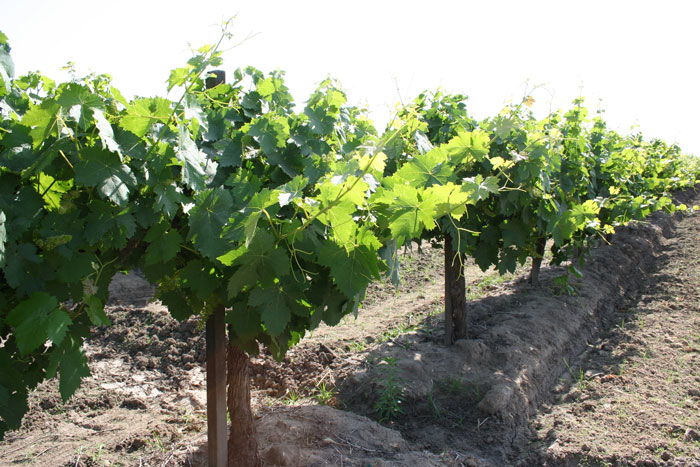
Promising cluster growth sets up Sierra Foothills vineyard for a good harvest
“The fruit set very quickly.” says Pam York. “Now, at the start of July, the clusters are growing well and filling in nicely. As long as we can keep the vines happy with water, it should be a good harvest.”

Until the arrival of triple-digit temperatures in late June, the weather in the Fiddletown AVA of Amador County had been just right for Casatierra Vineyard’s five acres of Syrah grapes, despite the drought.
Pam York and her husband, George, began planting the vineyard in the late 1990s. Over the course of several years they planted seven Syrah clones – 99, 174, 300, 383, 477, 877 and Hermitage – and harvested their first vintage in 2002.
“Usually, it seems, we have two weeks of spring between winter and summer,” says Pam York. “But, this year, spring was long and not too hot.”
That set the stage for a relatively fast bloom in late May and early June, which is pretty typical timing, she notes.
“The fruit set very quickly.” says Pam, who, with an employee, tends the vines. “Now, at the start of July, the clusters are growing well and filling in nicely. As long as we can keep the vines happy with water, it should be a good harvest.”
She expects veraison to start, as it typically does, around mid-July. That would put her crop on pace for the usual harvest in the second or third week of September
Located in the Sierra Foothills at an elevation of about 2,000 feet, the drip-irrigated vineyard is separated by a riparian zone. Like several neighboring vineyards, Casatierra Vineyard relies on an artesian well for irrigation water.
During May, a series of slow rains, each totaling one-half to three-fourths of an inch, helped the unusually dry decomposed granite soils soak up moisture.
Normally, Pam, who minimizes use of herbicides and pesticides, can control any weeds within the rows with a single mowing in early May.
However, the later-than-usual rains this spring prompted a flourish of weeds, requiring a second cutting in late June.
As of the first of July, Pam had not yet needed to irrigate her vines this season. When she does, she’ll cut her usual drip irrigation rates in half on part of her vineyards. It’s an experiment to see if she can reduce demands on their 200-foot deep well.
Instead of running the drip system for five or six hours a week, she’ll reduce each set to two-and-a-half to three hours.
In another experiment, Pam has grafted 300 Concord vines onto her Syrah plants. This was at the request of her grape buyer who wants to test their use in blending at the winery.
“Concord is a pretty vigorous grower,” she says, “Last year, we took all the fruit off. This year, we’ll see how productive the crop is. There’s a little irregularity in cane height. So, we may want to reduce the number of canes on the cordon to get more of a regular VSP canopy.”
Until 2010, Pam had been able to control powdery mildew with one or two sulfur sprays in the spring. That year, she lost her crop when the disease exploded during unusually foggy spring weather.
Since then, she’s been able to keep the disease at bay with timely applications of sulfur, finishing treatment with several sprays of Sonata before the threat ends with the onset of veraison.
Her vineyard had been free of any insect pest problems until last year. That’s when she began seeing whiteflies for the first time as she walked the rows. While they caused no damage, she’s prepared to take action, if needed, to control them this season. That would include adding an insecticide to the sulfur spray or, after verasion, applying the insecticide by itself.
Pam has relied on a mix of peas, fava beans, vetch, along with several clovers and short grasses, to provide nutrients, improve soil tilth and control weeds between her vine rows. However, after noticing unusually high numbers of voles in the vineyard when mowing them earlier this season, she’s having second thoughts.
The large vole population may reflect the lack of heavy rains and the resulting runoff in the past few years, which helped limit rodent numbers by drowning them in their underground burrows, she notes.
“If our rains come back, I think the vole problem will subside to normal levels,” Pam says. “But, if we remain in drought, I may replace the cover crop with compost to discourage the voles while controlling the weeds and keeping the soil healthy.”
About the Author(s)
You May Also Like



